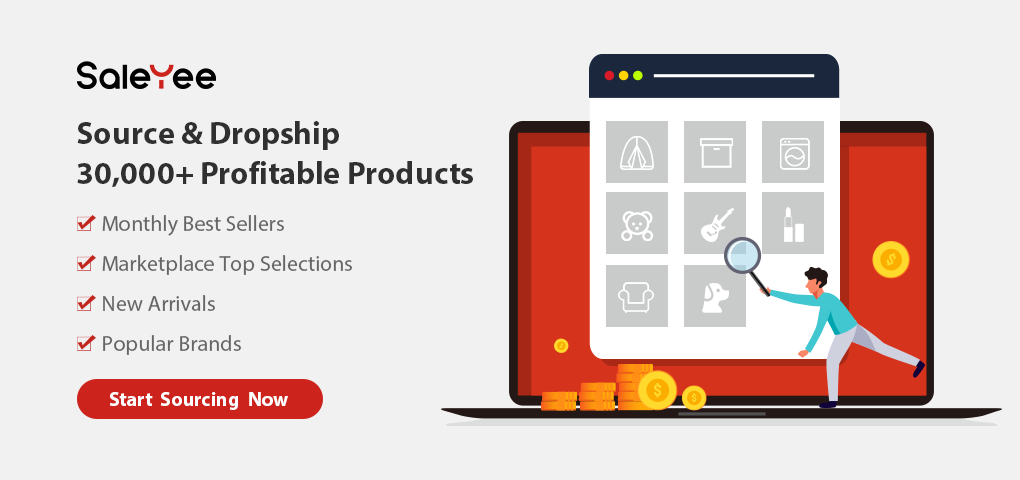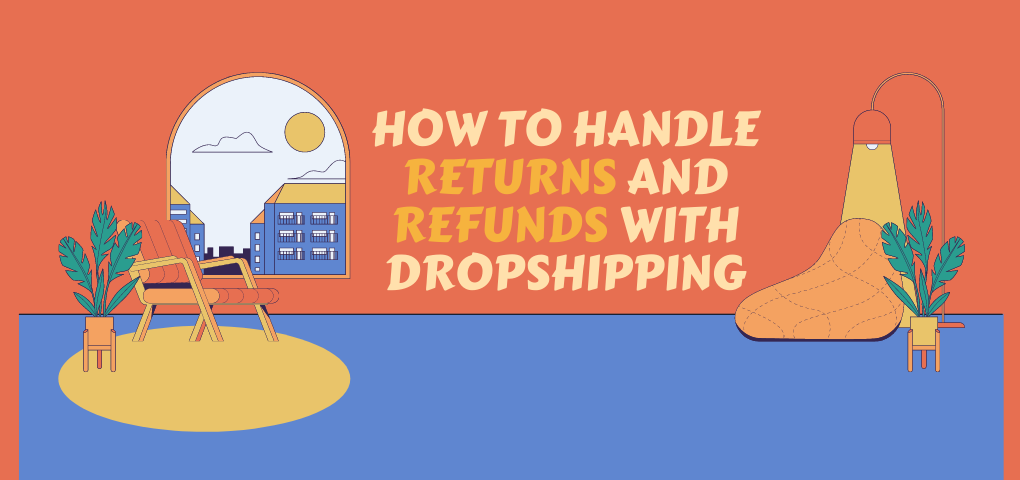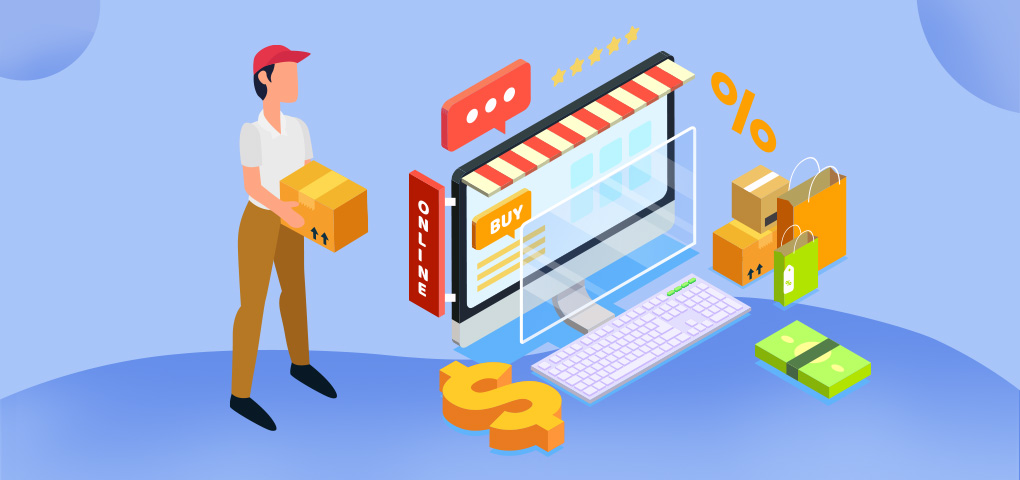In business, everyone wants to sell and maximize profits. No entrepreneur wants to ever deal with a refund or returns. In eCommerce, refunds and returns are two terms that every eCommerce entrepreneur wants to avoid. But as a business owner, you need to prepare for anything and everything. It becomes more of a priority since you are representing your brand. No matter the situation, it is your job to learn how to handle the refund and return requests in a professional manner. In this guide, you will learn everything about dropshipping dealing with returns & refunds, including why they occur, how to avoid them, and the policies you should have in place.
An eCommerce entrepreneur would feel displeased on hearing that a customer is requesting to return their order. Dropshipping returns and refunds are a nightmare. They can make a store owner run into loss; alternatively, it can leave a wrong impression of your brand and products on your customers. If you are in this shoe, help is on the way. You don’t have to panic before you can still give your customers a positive experience about you and your brand and earn their trust again. With all being said, returns and refunds are better avoided. Every store owner must keep their business professional. Keep a positive outlook when dealing with dropshipping returns and work towards providing the best customer service. Do you have unhappy customers? Is your store filled with negative reviews? There is hope. You can turn an unhappy customer into a returning customer. You can avoid negative feedback on your store and social media channels. With positive feedback, your unhappy customer can be your long-lasting friend.
How to handle refunds and returns in your dropshipping store
How you handle dropshipping refunds and returns varies uniquely on your store’s and your supplier’s returns and refund policy. However, some basic rules apply in virtually every scenario. They are:
- Not all products qualify for returns: Products like undergarments are often non-returnable. It is your responsibility as a store owner to indicate this on your product listing.
- The customer needs to apply for a return in the fastest time possible: In the event of any problem, the customer needs to identify and initiate the return process soonest.
- Returning a non-defective product: Most suppliers or companies will charge the customer for the shipment of the product. But, if you can afford the cost, you can offer free returns.
- Returning defective products: Since you have no control over the quality of your products, get ready to take responsibility if the product is compromised. This is essential if you want to retain them as customers.
- Work closely with your supplier: Dropshipping is a business model that involves three people; the customer, you, and your dropship supplier. It would be highly beneficial if you work in close consultation with your supplier. This way, you can have an idea of what to do in the event of a return.
- Have a returns policy page: Not having a returns policy in place has cost a lot of store owners. You don’t want to take this action for granted. A returns policy is a document that informs customers of your store’s guidelines on returning products.
With these basic guidelines in mind, let us delve into the steps involved in handling dropshipping dealing with returns and refunds.
Basic and effective process:
1. Assess the return request: Your customer will contact you via email by sending a return request via a self-service portal based on your dropshipping returns policy.
2. Establish a suitable solution: Before anything else, you want to know why they want a return. Asking politely will get you an answer. Their answer will suggest if they will get a return/refund or not.
3. Contact your dropshipping supplier: If your customer has a valid reason to request a refund/return, then you can move on to contacting your dropshipping supplier. Submit a refund or return request with your customer’s evidence and then you will receive a Return Merchandise Authorization (RMA) number.
4. Coordinate the return: In the case of a return, ensure that your customer is sending it to the right address.
5. Await the arrival of the return package
6. Complete the cycle
NB: Sometimes, it makes sense to refund your customer before your supplier refunds you. This is ideal if the shipping period is long. You don’t want to keep your customer waiting.
During this entire process, ensure that you respond nicely, be apologetic, and be empathic. Your main goal is to ensure the customer returns to the shop after a refund or return process.
Tips when handling refunds and returns :
First, never mention a refund when you receive a refund request mail or ticket. Second, check what your customer really wants? Does he want a refund or can he wait for a replacement? The second option seems to make sense profit-wise.
On another note, consider whether you want your customer to keep the product and get a new one or let your customer return the product to your dropship supplier before you they receive another. Consider what’s cheaper for you bearing your profit as well as your customer experience in mind.
Regardless, what if the customer still wants a refund?
What if your customer wants a refund – no apology, no return? Well, in this case, we recommend that you refund them and the case closed. However, every customer matter. It is easier to convince an existing customer to buy again than for a new customer to buy. Try your best to offer a return and if this doesn’t work, it is best to just refund and move on.
Meanwhile, you can still make a customer who has raised a refund request come back to your store again. How? Ensure you offer top-notch customer service. Show concern for their bad experience. Some customers just want online retailers to show some rumors for their shortcomings and that’s all.
Refunds and replacement are just the initial stages, there are some additional things you can do to ensure your customers will come back to shop at your store. Check these out:
- Store credit: You can give your customers store credit that is equivalent to the refund amount.
- Try offering a product upgrade for free: If you have a product that is superior to the one they ordered, you can offer them for free.
- Exclusive purchase: How about giving your customer a coupon code for their next purchase? Having gone through a lot returning an item they were not satisfied with, offering them a discount code is such a great way to have them come back.
- Offer a free product: For a customer who accepts to exercise patience for the replacement, sending an extra product for free isn’t a bad idea. Just make sure the free product is of relatively low cost. No matter how inexpensive or small the product is, your customer will appreciate it since it is for free.
Implementing these ideas can help rebuild trust between you and your customer. Remember your goal is to make them buy from your store again.
How to get fewer refunds and return requests when dropshipping?
Now you know how to handle refunds and returns in your dropshipping store, you still need to know how to reduce refunds and returns requests. Let’s show you how:
1. Beware of fraud
Sometimes, shoppers disguise themselves to be buyers just to carry out fraudulent activities. Before shipping any order, especially a big order, you should verify the legitimacy of the order. There are tips for detecting a fraud order:
- When the billing address is different from the shipping address, it calls for suspicion and a thorough investigation.
- Be wary of PayPal eChecks, some customers can cancel the check after you must have shipped the product. Ensure the payment drops into your PayPal account before processing the order.
- Take note of credit card frauds. Be sure the name on the credit card matches the billing address.
- Use tools to track fraudulent activities. Shopify has one of the best eCommerce tools for analyzing and reducing frauds.
2. Offer impeccable customer service
As I stated earlier, your response to a refund or return request can impact the customer’s decision. Responding politely and compassionately can reduce refund requests in your store, especially when your delivery takes a longer time. Your inability to respond politely could lead to a poor rating, refund, and return.
3. Read and understand the return policy of your supplier
You should get acquainted with the return policies of your suppliers. Return policies vary for different suppliers. Don’t just assume this is a size fit stuff, be aware to keep up with the latest updates.
4. Set up a solid dropship return policy
Research shows that 67% of online shoppers check a store’s returns page before making a purchase. Developing a returns policy for your store will save you a lot of stress. Understandably, your supplier’s policies will have a great impact on yours. So, it only makes sense to develop your dropship return policy in line with theirs. And if you don’t agree with a few policies from your suppliers, then you can tweak and do things differently. However, this also means you will have to handle some expenses and responsibilities. Another thing is to make sure your returns policy is honest and transparent so customers can trust you more.
5. Choose a reliable dropshipping supplier
One of the best ways of reducing returns and refunds request is by avoiding them entirely. And, this can only be achieved when you choose a reputable dropship supplier. Choosing the right dropshipping supplier like the SaleYee platform will save you a lot of stress and expenses. Hardly will you find any reason to get a refund or return. This is because they offer quality products, fast delivery, and excellent customer service – all of the ingredients needed for success online.
How Do You Create a Dropshipping Return Policy?
Before creating a dropshipping return policy, there are a few questions to ask yourself and a few things to consider. Below, we highlight what online store owners need to understand before creating a return policy.
What do you need to cover in a return policy?
A return policy is like insurance to the customers. It is what guarantees the customers before they buy from you. When developing your return and refund policy, any experienced online retailer will cover the following:
1. Specify which items can be returned or exchanged: When developing your dropshipping returns policy in your store, it is important to note that some products are exempted due to hygiene reasons for example socks and underwear. If you sell any of these products, then there is no need for a return. Another instance is a customer who purchases a sunglass worth $4, but he doesn’t like it. Let’s assume the customer pushes for a return. It won’t make sense for him to ship back to your supplier and then get a befitting sunglass. You can afford to send a new sunglass and bear the expenses; it will be cheaper this way. Don’t count it as a loss; you have ended up earning that customer’s loyalty.
2. Think about when things can be returned or exchanged: The following will guide customers on when they can return or exchange products:
- When the customer orders the wrong size or when the product doesn’t fit right. This is common with jewelry and t-shirts. In this scenario, your supplier will most likely not cover the return costs.
- The product arrived late or was lost in transit. If this happens, confirm the delivery guarantee from your supplier. If it exceeds the number of days stated, then you can log an official complaint.
- The product doesn’t match your dropship store’s description. This is common with color and sizes. Probably you copied the wrong information from your supplier or your supplier gave the wrong product description. It could be either your fault or his. In any case, crosscheck to know who is at fault here. If you are at fault, then you can give a refund or offer a replacement at your own expense. But if your supplier is at fault, you can write to him, providing the piece of evidence, and ask for a replacement or return.
- The product is defective or damaged. This may not be an issue if you have a reliable dropshipping supplier. But in this case, you can request an image or a video proof from your customer. When you get this, you can then send it to your supplier, requesting a refund or a replacement. On your own part, you have to apologize to your customer and convince them to be patient with the replacement.
3. Specify the required conditions of the item before returning: It is important to let your customers know the required conditions of the item before they return it. The item must be enclosed in its packaging and must not appear damaged beyond the evidence that was provided.
4. Clearly state how the customer will be paid back: In the event of a refund, we recommend that you clearly state the payment method and duration. Refunds may take longer times just ensure you state it on your dropshipping returns policy.
5. Pen down who will pay for the shipping costs: Some suppliers charge for returning a product. It is called a restocking fee. Most customers will be reluctant to pay these fees especially if you are dealing with low-priced items. It is safer to pay this fee yourself because, at this point, it may appear unfriendly to them.
6. Specify how your customers can initiate a return: Some stores have a resolution center where customers can initiate a return. Other stores allow the customers to send them an email about their return worries. Whichever method you choose, just make sure you state it as a part of your dropshipping returns and dropshipping policy.
7. Free return policy generator recommend
If you don’t know how to write a dropshipping returns policy for your store, you can use free return policy generators. A free returns policy generator can help you develop a return policy document for your store. Shopify and Termly are popular services, to begin with.
a.shopify https://www.shopify.com/tools/policy-generator/refund
b.termly https://termly.io/products/refund-return-policy-generator/
Final Thoughts
In eCommerce, returns and refunds are bound to happen but how well you handle dropshipping returns Reddit will go a long way in your business. If you don’t have one yet, you want to start by setting up a returns policy page on your site. This will ensure that your customers are satisfied and can trust your brand. It doesn’t stop there though; you also want to know your supplier’s returns and refunds policy. This will help you better understand what and what not to expect. Among other things, returns and refunds have cost many businesses. But when you do the right thing, you will be giving your customers a good reason to buy from your store.




